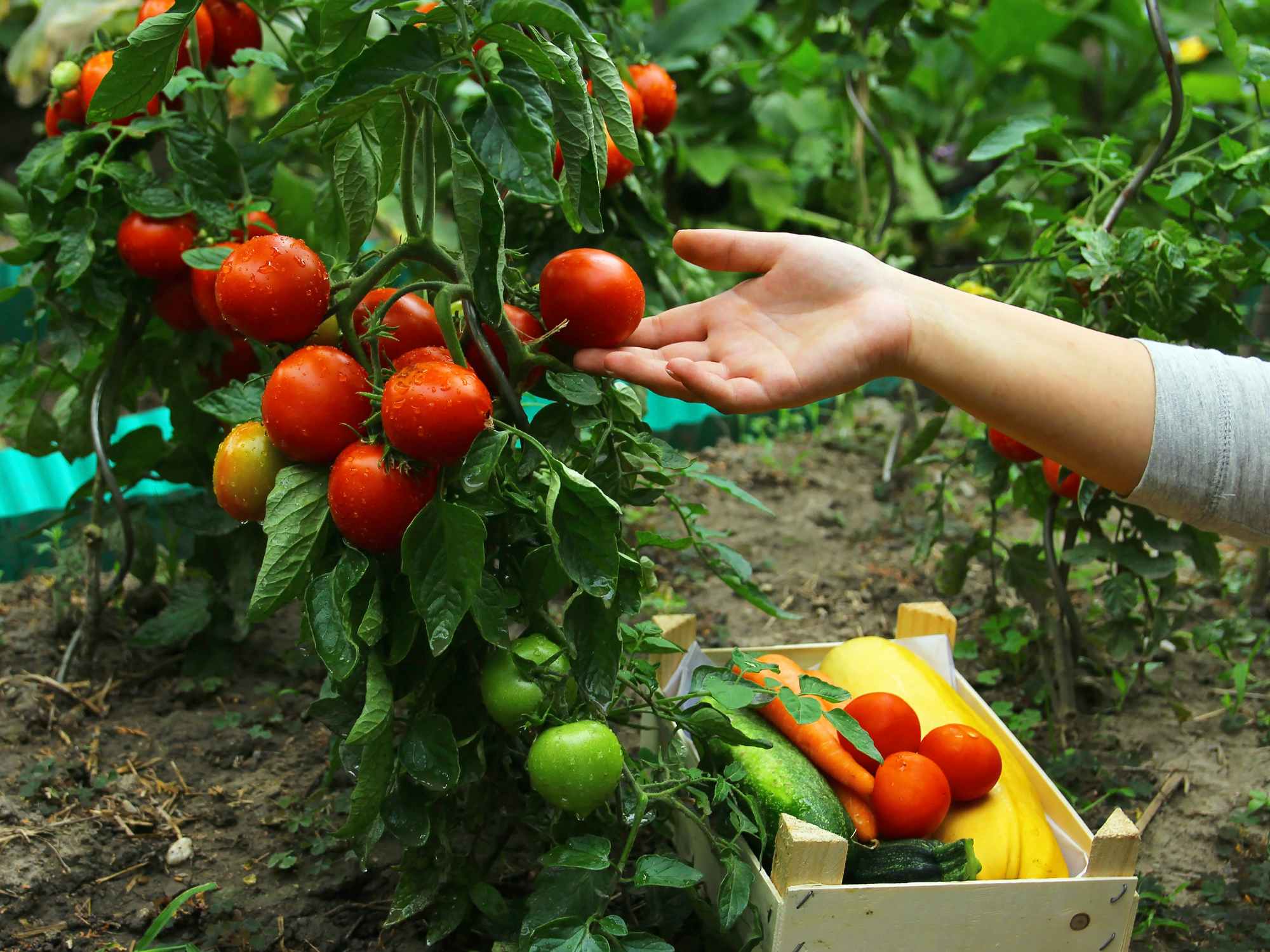Once you’ve decided what to grow in your garden for the season, it’s just as (if not more) important to determine where each plant should grow. You might be tempted to group similar kinds of plants together — like all vegetables in one corner and herbs in another — but that’s usually not the best idea. That’s why it is good to familiarize yourself with companion plants.
Plants soak up different kinds of nutrients from the soil, so you want to be mindful of which plants work well together so they’re not competing for all the nutrients in the soil. Otherwise, none of your plants will thrive. You should also consider water and sunlight needs, potential pest concerns, and other factors for each plant.
If this sounds confusing, don’t worry. We’re sharing all the research on companion plants so you know exactly how to organize your garden.
For more garden tips and all the best deals, download The Krazy Coupon Lady app.
Companions plants are basically garden buddies. They support each other.
Some plants are known to work especially well together — these are called companion plants. Sometimes they’re in the same family (like two kinds of vegetables), but often they’re unrelated. Surprisingly, tomatoes and basil grow really well together, as do peppers and okra.
And don’t worry, it’s not a trial-and-error situation. There are plenty of known companion plants, and we’re sharing the most popular ones to help you get the most out of your garden this season.
Tomatoes & Basil

Tomatoes and basil not only taste great together, they grow really well together, too. In fact, they’re one of the most common companion plants because of how mutually beneficial they are. Basil is a natural pest repellant, so it can protect your tomato plant from pesky bugs that like to chew on the tomatoes before they’re picked. And tomato plants provide plenty of shade for the basil so its leaves don’t dry out as it grows. They also need similar moisture levels, so neither plant is sucking up all the water from the ground.
Other companion plants for tomatoes:
- Carrots
- Cucumbers
- Squash
Related: How to Get Free Seeds for Your Garden
Lettuce & Beets
If you enjoy beets on your salads, listen up! Lettuce and beets grow well together. Lettuce plants have really shallow roots, so they take moisture from the top layer of soil. Beets, on the other hand, have deep roots so they tend to suck the water from farther down in the soil. That means when planted together, the plants don’t compete for water.
Other companion plants for lettuce:
- Asparagus
- Corn
- Pumpkins
- Radishes
- Squash
Peppers & Herbs

Peppers pair well with flowering herbs, such as cilantro, dill, and fennel. These herbs — which stem from the carrot family — attract some of the common pepper plant pests. You might be thinking, why plant peppers next to something that attracts pests? But in this case, it’s actually a smart idea because these bugs and insects will feed on the flowers of the herb plants and leave your peppers alone. Since pepper plants grow so tall and herbs don’t need quite as much sun, plant rows of these herbs in between your pepper plants for best results.
Other companion plants for peppers:
- Basil
- Carrots
- Onions
- Okra
Cucumbers & Sunflowers
Sunflowers are a helpful addition to a cucumber garden for a few different reasons. First, cucumber plants typically need some sort of support so they don’t fall over. It’s common to place a wire cage around the plants, but sturdy sunflower stalks can provide the same support when planted next to cucumbers. Cucumber plants are also prone to wilting or getting too hot in the sun. Since sunflowers grow so high and have so many large leaves, they can protect cucumber plants from getting too much sun, especially in the summer months.
Other companion plants for cucumbers:
- Beets
- Carrots
- Corn
- Dill
- Oregano
- Radishes
Carrots & Radishes

Much like with lettuce and beets, pairing cucumbers and radishes can maximize your garden space. Radishes have short roots and tend to take water from the top level of soil, while carrots grow farther down in the ground and use the water supply in lower levels of soil. Carrots also thrive in cooler environments, so planting them near the protective leafy green radish tops can keep them from overheating.
Other companion plants for carrots:
- Cabbage
- Chives
- Lettuce
- Onions
- Rosemary
- Sage
Spinach & Eggplant
If you’re planning to grow spinach this season, find a few eggplant recipes to try out as well. Eggplants are usually pretty tall plants, so they protect the delicate spinach leaves from getting too much sun, especially in the hot summer months. And spinach is actually good for eggplant, too; spinach is a pretty dense crop, so it protects the area from weeds that can suck all the water out of the soil.
Other companion plants for spinach:
- Cabbage
- Cauliflower
- Lettuce
- Potatoes
- Tomatoes
































Tell us what you think